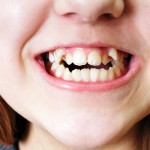
Malocclusion is a common condition as is treatment. One potential benefit of orthodontic treatment is an impact on quality of life (QOL) and increasingly these measure are being used to assess both the impact of treatment and the effect of malocclusions on QOL.
The main aim of this review was to assess the impact of malocclusion on oral health related quality of life (OHRQOL)
Methods
Searches were conducted in the Medline, Embase, Web of Science, Cochrane CENTRAL, PsychInfo, CINHAL and Scopus databases as well as Google Scholar. English-language studies providing quantitative information about the association of malocclusions with OHRQOL assessed by a questionnaire validated for the use in children were considered. Two reviewers carried out data extraction independently. Methodological quality was assessed using the Newcastle-Ottawa Scale (NOS) adapted for cross-sectional studies.
Data for boys and girls was combined if presented separately. Studies that used a continuous OHRQOL scale (mean ± SD) were grouped in one meta-analysis. Studies that used a categorical OHRQOL outcome (no impact vs impact) were grouped into another meta-analysis. Some studies were included in both analyses. Subgroup analyses of both meta-analyses were conducted to assess heterogeneity among the studies.
Results
- 40 cross-sectional studies were included in the meta-analyses.
- A range of OHRQOL measures were used
| Measure | No of Studies |
| Child Perceptions Questionnaires, (CPQs) 8–10 years | 4 |
| Child Perceptions Questionnaires, (CPQs) 11–14 years | 14 |
| Child Oral Impact of Daily Performances (OIDP) | 9 |
| Child Oral Health Impact Profile (COHIP) | 2 |
| Early Childhood Oral Health Impact Scale (ECOHIS) | 5 |
| Oral Aesthetic Subjective Impact Scale (OASIS) | 1 |
| Oral Health Impact Profile (OHIP) | 5 |
| Psychosocial Impact of Dental Aesthetics Questionnaire (PIDAQ) | 2 |
- Summary measures of the continuous data show that OHRQOL was significantly lowered in children with malocclusions (standardized mean difference (95 % CI] = 0.29 (0.19-0.38)).
- Children with malocclusion are more likely to have an impact on OHRQOL than children without malocclusions Odds ratio = 1.74(95%CI; 1.46-2.08)
- High heterogeneity was seen in both analyses.
- Heterogeneity among studies was partly explained by malocclusion assessment, age of the children and country of study conduction.
Conclusions
The authors concluded:
The association of malocclusion and OHRQOL has mainly been assessed in cross-sectional studies. From these studies, it can be concluded that children perceive a small impact of malocclusions on OHRQOL. The effect of malocclusions on OHRQOL is modified by the age of the children and their cultural environment. Further research should investigate whether remaining heterogeneity in the association of malocclusions with OHRQOL can be explained by other individual factors of the children.
Comments
There have been a number of systematic review on this topic two of which we have covered in previous blogs (Dental Elf – 22nd Sep 2014 & 12th Jun 2014). All these reviews tend to show that malocclusion has an effect on quality of life although this seems to be small. All of the studies included in this new review are cross-sectional so may not represent changes in life circumstances or impact of orthodontic treatment. The authors also highlight that they took the decision to include all the studies and not differentiate based on quality. They also did not take into consideration whether the questionnaire were completed by parents or children.
Links
Primary paper
Kragt L, Dhamo B, Wolvius EB, Ongkosuwito EM. The impact of malocclusions on oral health-related quality of life in children-a systematic review and meta-analysis. Clin Oral Investig. 2015 Dec 4. [Epub ahead of print] PubMed PMID: 26635095.
Other references
Original Review Protocol on PROPSERO
Dental Elf – 22nd Sep 2014 – Orthodontic treatment: Does it improve quality of life for patients?

Impact of malocclusion on oral health related quality of life is small https://t.co/dBcwzRRLtm
Children perceive a small impact of malocclusions on oral health related quality of life https://t.co/dBcwzRRLtm
Effect of malocclusions on oral health related quality of life is modified by child’s age https://t.co/dBcwzRRLtm
Cultural environment modified the effect of malocclusions on oral health related quality of life https://t.co/dBcwzRRLtm
Impact of malocclusions on oral health-related quality of life in children is small
https://t.co/dBcwzRRLtm
[…] Dental Elf – 13th Jan 2016 – Impact of malocclusion on oral health related quality of life i… […]